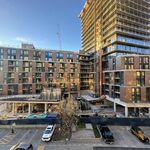Torontovibe
Senior Member
Hey, that used to be my favourite Chinese restaurant! DAMN POUTINE!!!
When I moved to Toronto in the 90s, these kinds of scenes didn't really shock me (as I lived in downtown Montreal before that), but it was still something I tried to avoid when possible.When I moved to Toronto 3 years ago, these kinds of scenes really shocked me, but now I rarely look twice.
Pretty much every day for the last 20 years I've thought about what could make the situation better and come up blank. I either joke about it or I'll have to switch hoods. Although there is steady stream of news about people who do beat their demons, http://www.thestar.com/article/690692 , I think these success stories are the exceptions.
Compassion without action is worthless. So what's your action?
Along with quite a few hostels, shelters, lowrises and that whole row of Victorians on the east side of Sherbourne north of Queen (or is it north of Dundas Street?) I can't think of many areas with such a high concentration of mentally ill folk in such close proximity.



First, I don't believe that mentally ill people (or low income individuals/families for that matter) should be ghettoized. Halfway houses, recovery centres and such should be spread out more throughout the downtown area and I say downtown because that is where access to support systems are mostly located for these folks. That said, Toronto mostly does a pretty good job and is continuing to improve anti-ghettoizing measures for homes for the mentally ill and lower income earners. Of course there are exceptions, Moss Park being one of them. Along with quite a few hostels, shelters, lowrises and that whole row of Victorians on the east side of Sherbourne north of Queen (or is it north of Dundas Street?) I can't think of many areas with such a high concentration of mentally ill folk in such close proximity.
2 Issues raised here are the general question of dealing with poverty and/or mental illness etc. ...
Pages??!!! Quit your whining and get your ass over here!!!!
Architect Paul Reuber has already imagined a spectacular redesign for Moss Park. He retains the buildings, but surrounds the frontage with live/work/retail Victorian repros. The drawings are no longer online, but I remember being very impressed.
cracktowner:
One axonometric drawing of the scheme can be found in John Sewell's Shape of the City.
AoD
Other newish neighbourhood developments around Queen & Sherbourne:
...Good news, no?




